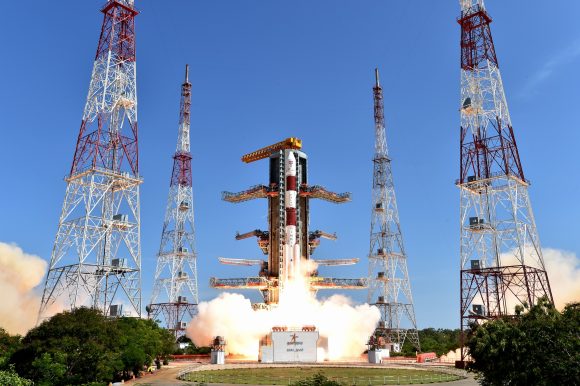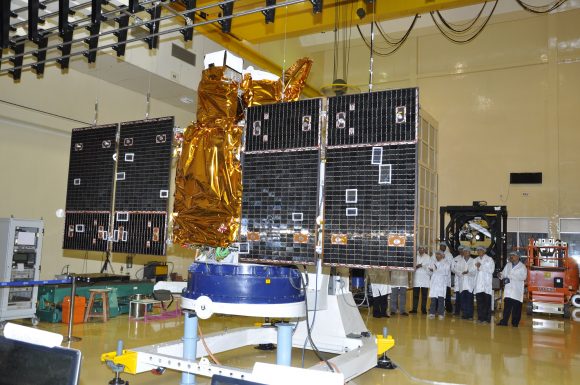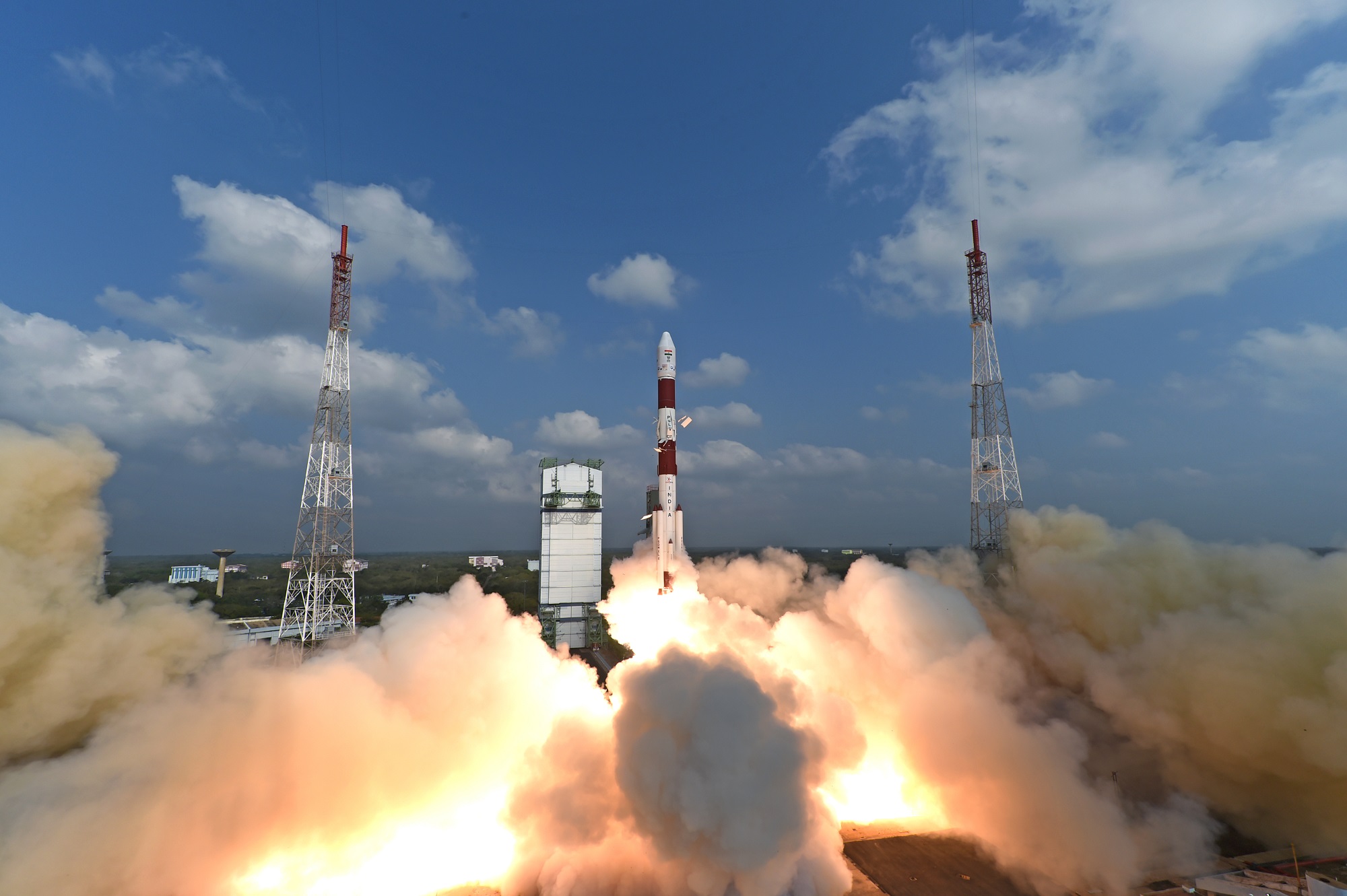India’s national space agency – the Indian Space Research Organization (ISRO) – has come a long way in recent years. In 2008, the agency launched its first lunar explorer, Chandrayaan-1, which also deployed a lander (the Moon Impact Probe) to the surface. And then there was the Mangalayaan mission – aka. the Mars Orbiter Mission (MOM) – which made history on Sept. 24th, 2014, when it became the first probe to enter orbit around Mars on the first try.
In their latest feat, the ISRO established a new record for the number of satellites launched in a single mission. In what was the thirty-ninth launch of the Polar Satellite Launch Vehicle (PSLV), the organization deployed 104 satellites into orbit. In so doing, they have effectively overtaken the previous record of 37 – which was established by Roscosmos in June of 2014.
This launch was also the thirty eighth successful mission in a row for the PSLV. which has been in service since the early 1990s. Prior to this flight, the rocket had successfully launched a total of 71 satellites and spacecraft – 31 of which were Indian – into a variety of orbits. The most satellites it launched at one time was 20, which took place on June 22nd, 2016, with the launch of the PSLV-C34 mission.

Hence, it has not only beaten its own record this single launch (and by a factor of five, no less), but more than doubled the total amount of satellites it has deployed. This mission also pushed the total number of Indian-made satellites sent into space aboard the PSLV rocket to 46, and the number of customer satellites that India has launched to 180.
As the ISRO reported shortly after the launch:
“PSLV-C37 lifted off at 0928 hrs (9:28 am) IST, as planned, from the First Launch Pad. After a flight of 16 minutes 48 seconds, the satellites achieved a polar Sun Synchronous Orbit of 506 km inclined at an angle of 97.46 degree to the equator (very close to the intended orbit) and in the succeeding 12 minutes, all the 104 satellites successfully separated from the PSLV fourth stage in a predetermined sequence beginning with Cartosat-2 series satellite, followed by INS-1 and INS-2.”
Shortly after the launch, Prime Minister Narendra Modi, took to Twitter to congratulate the scientists and laud the space agency for its record-breaking accomplishment. “This remarkable feat by @isro is yet another proud moment for our space scientific community and the nation. India salutes our scientists,” he tweeted. “Congratulations to @isro for the successful launch of PSLV-C37 and CARTOSAT satellite together with 103 nano satellites!”

The cargo consisted of a Cartosat-2 Series Satellite, which is the latest in a series of ISRO Earth-observation satellites. In the coming days, the satellite will position itself and begin to provide remote sensing services using its state-of-the-art panchromatic (PAN) camera – which takes black and white pictures of the Earth in the visible and EM spectrum – and its multi-spectral (color) cameras.
In addition, two technology demonstration satellites from India were deployed – the Nano Satellite-1 (INS-1) and INS-2. The remaining 101 co-passenger satellites were all the property of the ISRO’s international customers – with 96 coming from the US, and five coming from the Netherlands, Switzerland, Israel, Kazakhstan and the United Arab Emirates, respectively.
In addition to demonstrating the capability of India’s launch workhorse, this latest mission also shows the growing importance countries like India play in the modern space age. In the coming years, the ISRO hopes to commence its proposed human spaceflight program, which if successful will make it the fourth nation to conduct crewed missions to space (alongside NASA, Roscosmos, and China).
And be sure to check out the video below for footage of the PSLV-C37 mission’s liftoff and on-board camera video:
Further Reading: ISRO


Isn’t there enough junk in near space already? Who is going to keep track of all these nanosatellites to prevent collisions with other spacecraft? Are they essential? Isn’t it time for an international monitoring and controlling body to step in and impose limits? Does anyone in the space sector ever ask such questions?
Watching this video, I have the same feeling I had when, as a boy of 13, I stood on the deck of a passenger ship in the sun-sparkling ultramarine, dolphin-infested Mediterranean and watched crew members carelessly tossing innumerable plastic bags of rubbish into that seemingly pristine sea. The feeling was disgust. I was right. The Mediterranean is now seriously polluted, and many precious lifeforms have vanished.
We’ve polluted the oceans from the surface to the bottoms of the deepest trenches. We’ve polluted the very air that we breathe to a shocking degree and we’re rapidly making this beautiful planet uninhabitable for ourselves and our fellow lifeforms, which are considerably more responsible in their actions that homo non sapiens.
And now we’re polluting near space! Is there no end to the foolishness of humanity? And what happens when all this shit falls back into the atmosphere to burn up? Has anyone realised yet that when satellites, discarded rocket stages and other junk burns up in the atmosphere during re-entry, it also causes pollution, including pollution with some very nasty compounds?
No? I thought not.
Does anyone know what these satellites are for? 96 appear to be identical.